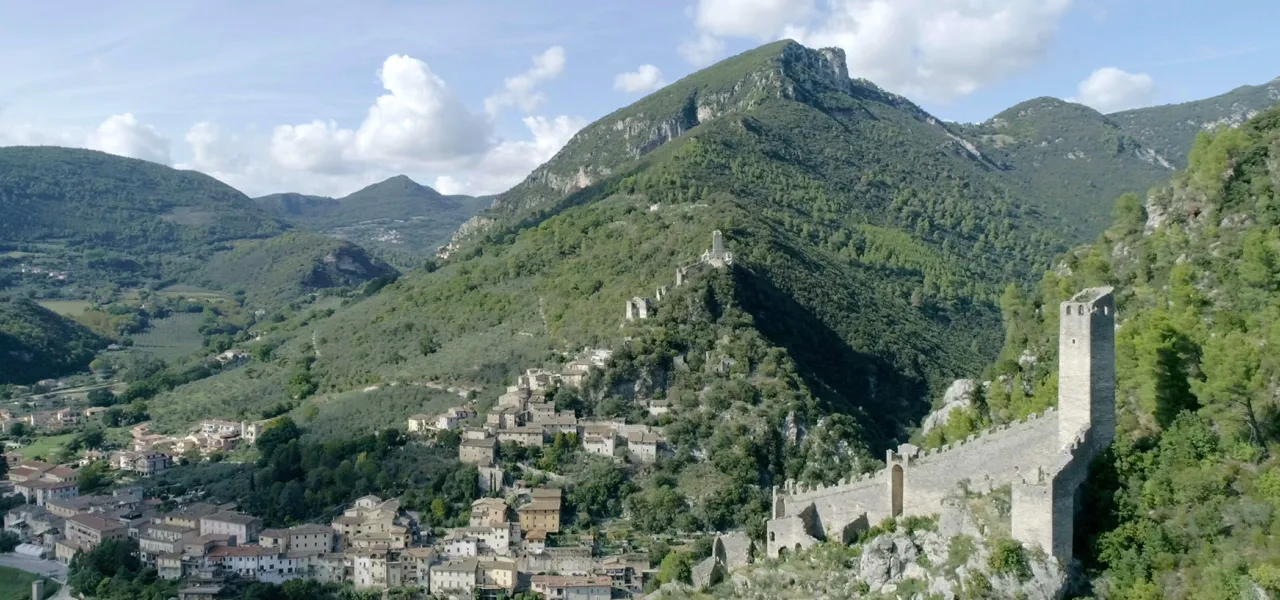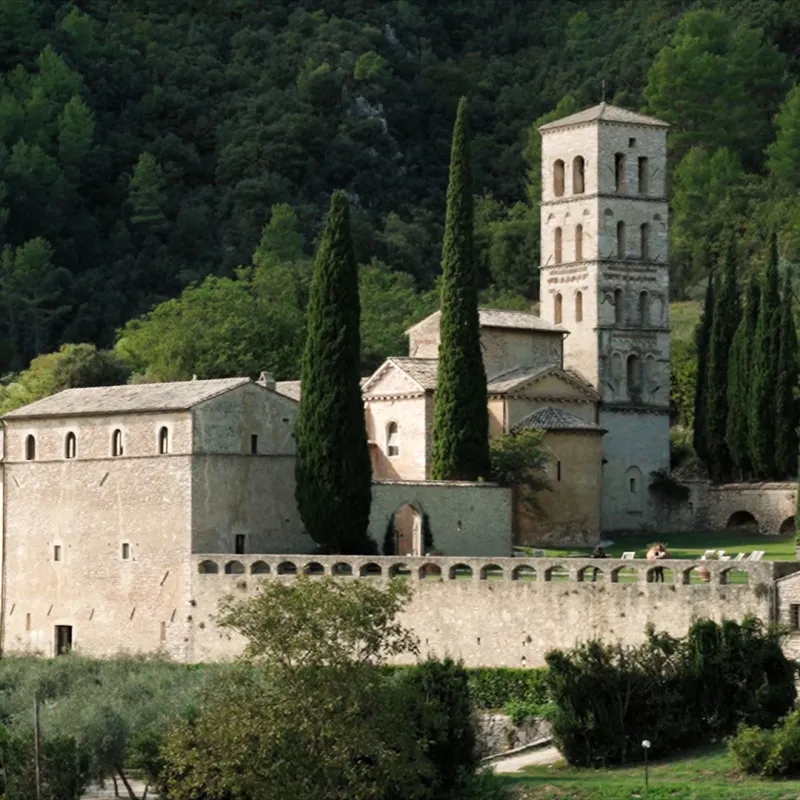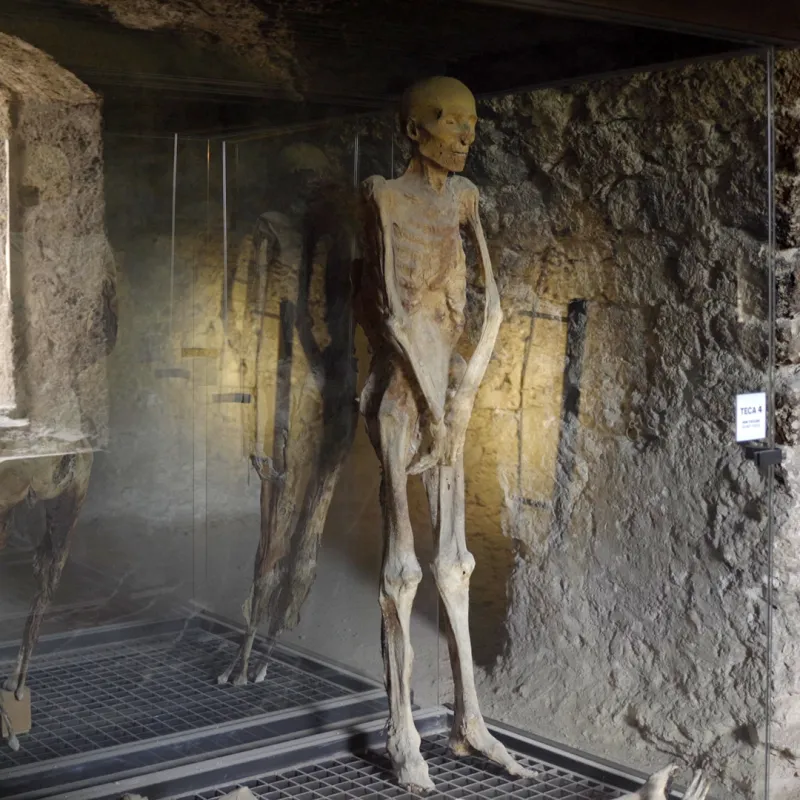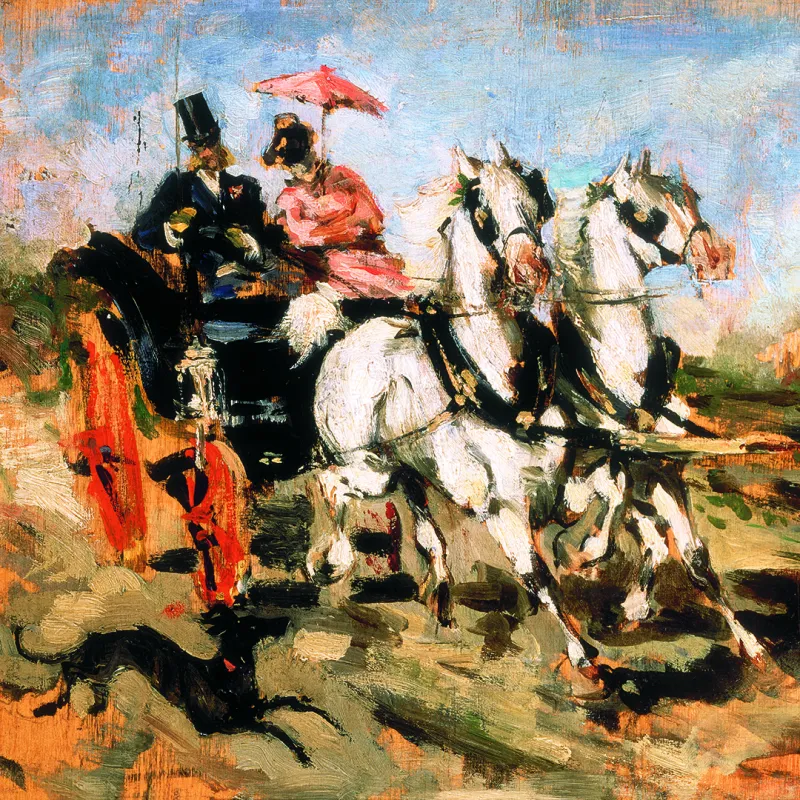Ferentillo

The defensive system was built to protect the nearby Abbey of San Pietro in Valle from the west, which was an important spiritual and power centre in the Middle Ages. The origin of the two villages can be dated back to around the 12th century. Both, in addition to their defensive functions, were involved in the trade along the perpendicular route to the Valnerina, connecting Rieti to Spoleto.
Matterella, on the left going up the Valnerina, was built around the parish church of Santa Maria and under the Rocca, consisting of massive cylindrical bastions, with a square keep in the centre. The settlement developed following the steep slope of Monte Gabbio. Further down the valley, along the road lined with noble buildings, stands the Collegiate Church of Santa Maria.
On the other side, the village of Precetto is perched on the slope of Monte Sant'Angelo, topped by the watchtower and defended by imposing walls with Guelph-style battlements. The village extends downstream as far as the Nera River and in the middle part, the church of Santo Stefano stands out, under which the Mummy Museum is housed.
MUST SEE

The abbey of San Pietro in Valle has thousands of years of history and has its roots in the early Middle Ages.

The Ferentillo Mummy Museum is located inside the crypt of the Church of Santo Stefano.
